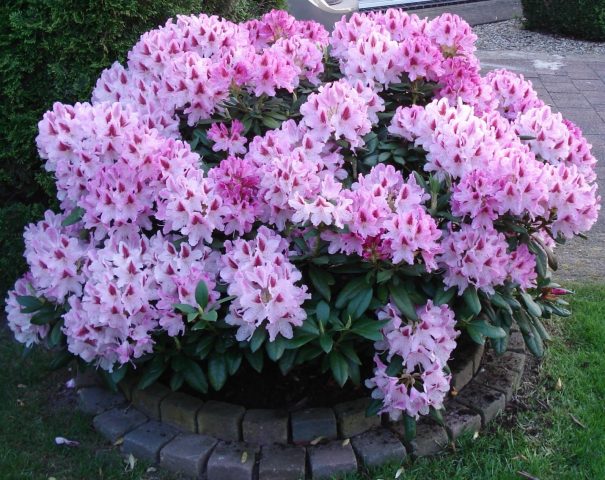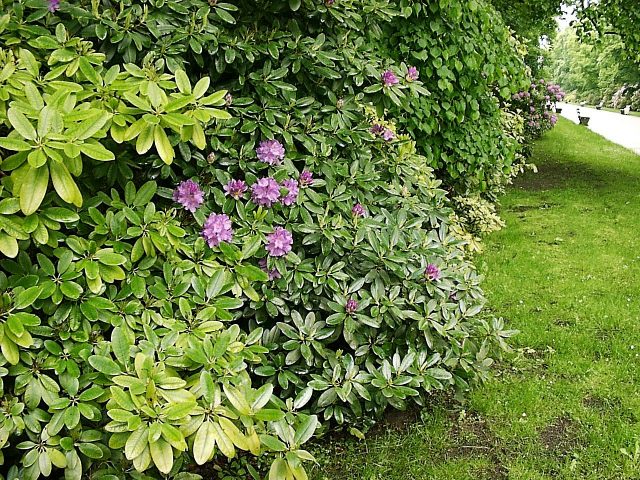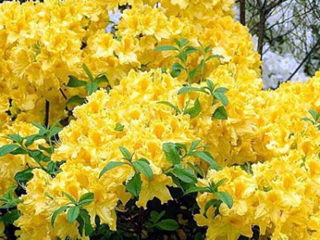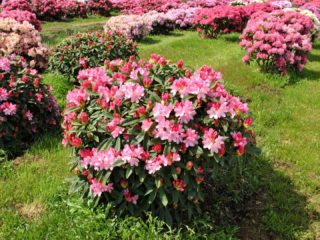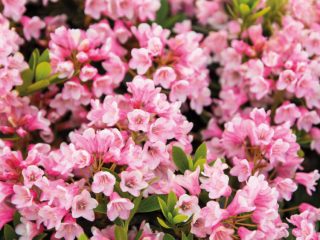Content
It is impossible to imagine a garden without flowers. And if roses, dahlias and peonies are considered the most common plants that delight with their beautiful inflorescences almost all summer, then rhododendron is a rather rare and unusual shrub plant, which is less common. It is easy to explain its small popularity among gardeners, because it is a capricious and thermophilic plant that requires a lot of attention. And, unfortunately, rhododendron does not bloom in the absence of proper care for it. But having found an approach to it, for many growers growing rhododendron grows into a hobby.
How rhododendron blooms
Rhododendron belongs to the Heather family of plants. This name hides more than 800 species, which are divided into evergreen, deciduous and semi-deciduous shrubs, and even trees.
Depending on the species, this shrub has different inflorescences, which differ not only in color, but also in size and shape. In different plant varieties, flowers can be funnel-shaped, tubular, wheel-shaped or bell-shaped.
The most widespread among Russian flower growers is a deciduous species called azalea. Its flowers are quite large and of various colors, often pink and lilac shades. White, yellow and red inflorescences are no less popular.
Azaleas of most varieties have an unusual, but very pleasant aroma during flowering.
When rhododendron blooms
The duration and period of flowering of rhododendron completely depend on climatic conditions, proper care, as well as on the selected plant variety. But if you look at the physiology, then many species of rhododendron are spring, their flowering period falls between April and June. Some varieties can bloom again between August and October.
With proper planting of a young purchased seedling and with proper care, it will bloom no earlier than after 4 years. If an adult plant was purchased, then flowering can be expected earlier. But when planting with seeds, it is worth waiting for the flowering of rhododendron only after 5-7 years.
How many rhododendron blooms in time
The flowering time of rhododendrons is different and also depends on the type of plant. But it is worth noting that the following factors can also affect the duration of flowering:
- climatic conditions;
- temperature;
- light hit;
- nutritional value of the soil;
- plant age.
On average, rhododendron blooms for 16 to 20 days. More hardy species of rhododendron can bloom for a long time - up to 45 days.
How many times rhododendron blooms
Gardeners who are closely passionate about the cultivation of rhododendrons know that this plant pleases every year with its abundant spring flowering. At the same time, almost all species during the growing season bloom once before and during the leaf blooming, except for some species. For example, the spiky rhododendron may begin to bloom again in August, but this bloom is rather weak, unlike the first, spring.
Why does the evergreen rhododendron not bloom
Growing a rhododendron in a garden is a rather troublesome business that requires not only special attention, but also proper experience. In some cases, amateur gardeners, fascinated by the beauty of this shrub, after planting, cannot understand when and how the rhododendron will bloom. And if this process does not occur for a long time, it is worth finding the reasons why the rhododendron does not bloom in the garden. In fact, there are many such reasons, and among the most common are the following:
- Wrong choice of landing site. Many gardeners, knowing the capriciousness of this plant, try to give it the best place in the sun. In fact, rhododendron naturally grows in the undergrowth, where it is protected from direct sunlight.
- Failure to comply with the landing rules. The soil for a rhododendron should be acidic, rich in humus and well saturated with oxygen. The depth of the planting hole should not exceed 40 cm, and approximately 60 cm in diameter. The root collar of the plant after planting should be flush with the soil surface. After planting, if the soil is dry, it is required to pour abundant warm water under the root. Be sure to mulch 5-7 cm with peat, rotted needles or leaves, chopped oak bark is also suitable.
- Improper feeding. Fertilizing the soil must be done at least 3 times per season. The first feeding is carried out in early spring, then fertilizers are added at the end of flowering, the last feeding is performed in mid-July. As fertilizers, it is best to use an acidic composition (superphosphate - 10 parts, ammonium - 9, potassium - 4, magnesium - 2).
- Excess nitrogen fertilizers. During flowering, excess nitrogen in the soil can cause branches to grow, but not buds.
- Improper watering. Rhododendron requires special watering using acidified water. Using ordinary water can lead to alkalization of the soil, which will adversely affect the plant. To properly acidify the water, add 3-4 g of citric or oxalic acid to 10 liters of water.
What to do if rhododendron does not bloom
There are times when the rhododendron was acquired by a sufficiently mature seedling and after planting it bloomed well in the first year, but the following years of flowering did not come. In fact, there are many reasons for the suspension of flowering, as described above. And before you start to apply any actions, you should first figure out why the flowering was suspended.
First, you need to check the acidity of the soil. After all, maybe in the first year the rhododendron bloomed due to the fact that it had enough nutrients obtained from the peat ball, in which its roots were located after transplantation. As the root system grew, the roots began to assimilate the soil in which they found themselves. And with insufficient acidity of the soil, the plant ceased to receive the necessary substances for proper growth and flowering.
The rate of soil acidity for the normal development of this plant should be pH 3.5-5. Therefore, to improve the composition of the soil and increase its acidity, organic fertilizers can be used, such as:
- high-moor sphagnum peat;
- rotted leaves and needles;
- grass, straw or hay;
- loam, rotted manure.
If the soil is acidic enough, but the rhododendron still does not tend to bloom, it may not be suitable for the place where it was transplanted. It is important to choose not only a place with diffused sunlight, but also sufficiently protected from the winds. Particularly unfavorable places for the growth of rhododendron are open terrain and the area near the corners of buildings, where through winds are always present.It is also undesirable for this plant to be adjacent to trees and shrubs with a superficial root system:
- beech;
- maple;
- Linden;
- willow;
- alder.
If this planting rule has been violated, then it is recommended to choose another place and transplant the plant.
Lack of feeding can lead to starvation of the plant, which will certainly affect its flowering. Therefore, it is necessary to fertilize the soil in early spring and after flowering. This will contribute to the establishment of flower buds for the next year.
Keeping the plant protected from sunburn in early spring will also allow the plant to bloom on time. To do this, after the snow melts, cover the bush with spunbond.
And the most important thing is improper watering. For proper bud setting and good growth, the plant needs a lot of water so that the root system can receive the necessary amount of nutrients from the soil. Therefore, rhododendron needs to be watered intensively both during growth and development, and during budding.
Conclusion
Rhododendron does not bloom for quite simple reasons that can be easily eliminated. Subject to all the requirements for planting a plant and subsequent care, the rhododendron will bloom for a long time and delight with its beautiful flowers every year.
